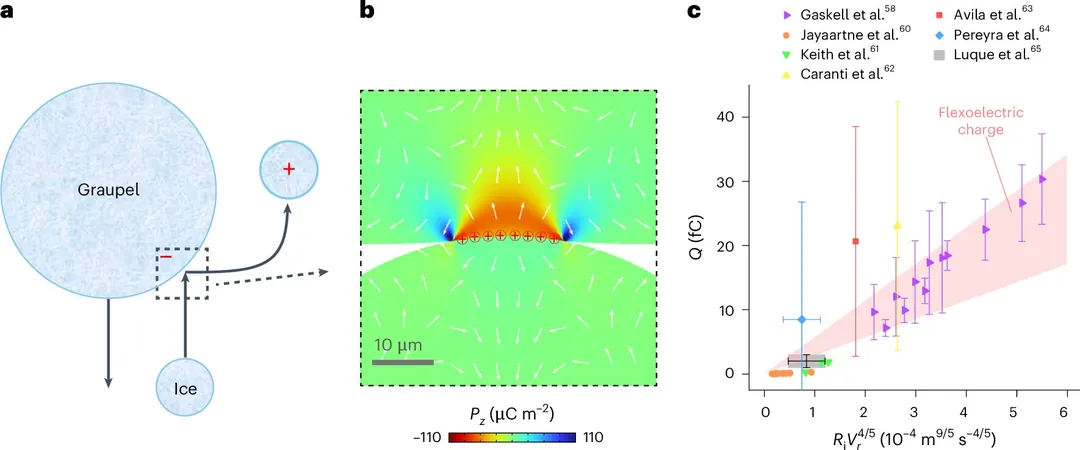
A Shocking Discovery: Ice Can Generate Electricity When Bent!
2025-09-01
Author: Emily
Ice: More Than Just Frozen Water
In an astonishing breakthrough, researchers have unveiled that ice is not just a common element on Earth but also a flexoelectric material. This means that ice can generate electricity when it is unevenly deformed, a revelation that could transform technology and enhance our understanding of natural processes like lightning.
Unlocking Ice's Hidden Potential
An international collaboration involving ICN2 at the UAB, Xi'an Jiaotong University, and Stony Brook University has revealed this remarkable property of ordinary ice for the first time in a study published in Nature Physics. As it turns out, when mechanical stress is applied to ice, it produces electric charges at all temperatures—a groundbreaking discovery in the electromechanical field.
Dr. Xin Wen, a leading researcher from the ICN2 Oxide Nanophysics Group, noted, "We also found a ferroelectric layer at temperatures below -113°C (160K), allowing ice to develop electric polarization, which can be reversed with an external electric field. This means ice has TWO methods of generating electricity: ferroelectricity at very low temperatures and flexoelectricity closer to 0°C.”
From Science Lab to Technological Innovations
With these properties, ice could rival advanced electroceramic materials such as titanium dioxide, which are widely used in tech applications like sensors and capacitors. This opens the door for potential future technology incorporating ice as an active material, possibly transforming how we design electronic devices.
Electrifying Nature: Ice and Thunderstorms
Even more intriguing is the implication of this discovery in the natural world. The flexoelectric properties of ice may play a crucial role in cloud electrification during thunderstorms, shedding light on the complex phenomenon of lightning. Current understanding suggests that electric charge in clouds forms from collisions between ice particles. However, icy interactions were previously thought to lack a mechanism for charge generation, since ice isn't piezoelectric.
But the study demonstrates that ice can become electrically charged through irregular deformations—an essential breakthrough! Prof. Gustau Catalán described how they measured the electric potential generated by bending a slab of ice, which aligns perfectly with previously observed phenomena in storm clouds.
The Future of Ice: A Path to New Technologies?
As researchers delve deeper into these findings, they are setting the stage for pioneering applications of ice in electronics. While it may be premature to discuss definitive innovations, the possibility of harnessing ice's unique properties in cold environments could revolutionize how we perceive this simple, yet complex, substance.









 Brasil (PT)
Brasil (PT)
 Canada (EN)
Canada (EN)
 Chile (ES)
Chile (ES)
 Česko (CS)
Česko (CS)
 대한민국 (KO)
대한민국 (KO)
 España (ES)
España (ES)
 France (FR)
France (FR)
 Hong Kong (EN)
Hong Kong (EN)
 Italia (IT)
Italia (IT)
 日本 (JA)
日本 (JA)
 Magyarország (HU)
Magyarország (HU)
 Norge (NO)
Norge (NO)
 Polska (PL)
Polska (PL)
 Schweiz (DE)
Schweiz (DE)
 Singapore (EN)
Singapore (EN)
 Sverige (SV)
Sverige (SV)
 Suomi (FI)
Suomi (FI)
 Türkiye (TR)
Türkiye (TR)
 الإمارات العربية المتحدة (AR)
الإمارات العربية المتحدة (AR)